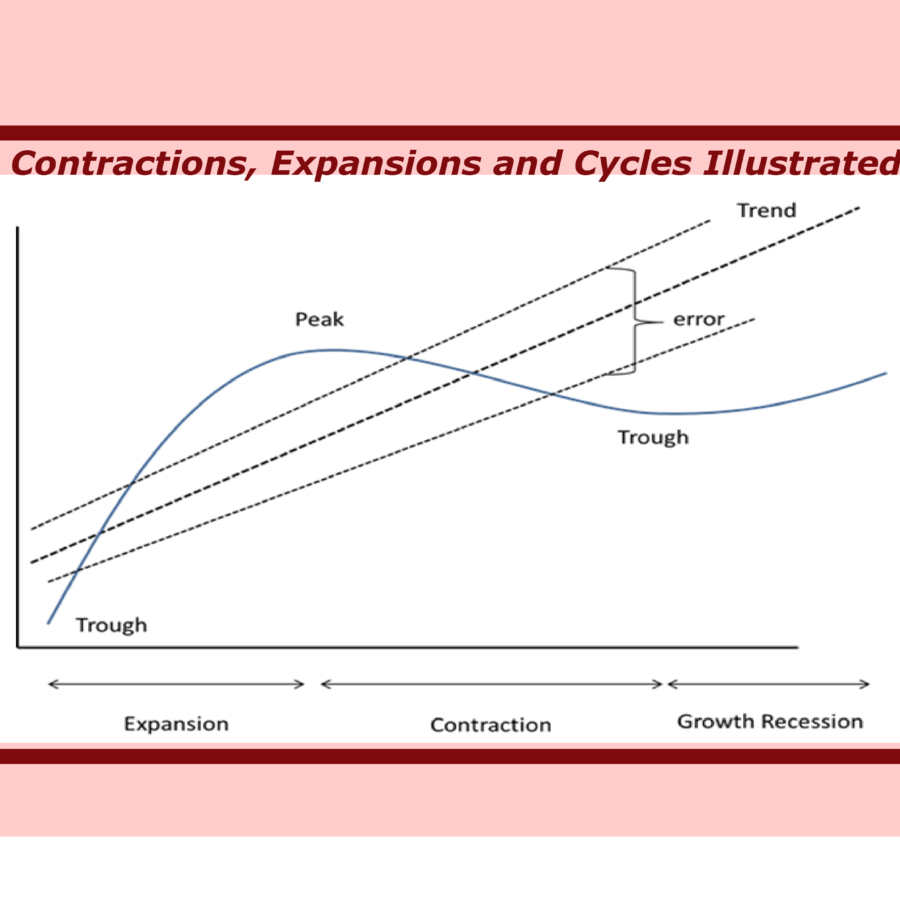- Home
- Publications
- The UK Business Cycle – Dating And Implications
The UK Business Cycle – Dating and Implications
 Pub. Date
Pub. Date
 Pub. Type
Pub. Type

Authors
Related Themes
Macro-Economic Modelling and ForecastingThe Institute is at the centre of the National debate on the measurement and understanding of business cycle fluctuations. We start this process at the fundamental level. The UK has some excellent long run data on economic progress and some of the basic facts of business cycle peak and troughs have been explored in earlier work at the Institute. Chadha and Nolan (2002) explored the long run of the UK business cycle and presented some stylised facts on duration and the cyclical behaviour of macroeconomic aggregates. We present a Table from Appendix A from their working paper with some basic business cycle dates.
Given the experience since 2008, we also need to understand whether recessions are important phenomena in their own right or simply draws from the tail of a well understood distribution. We will start with a short paper, written by Institute Staff, that will outline the measurement issues related to the Business Cycle. We will then apply this methodology to UK data to establish the relevant dates. Given its long history of real-side analysis, the Institute is the natural place to set out the basic facts on the business cycle and ensure their wider dissemination. The composition of our Business Cycle Dating Committee will be announced shortly. For any further information on this initiative or to participate please write to:
Prof J. S. Chadha
Director
National Institute of Economic and Social Research
2 Dean Trench Street
Smith Square
London
SW1P 3HE
j.chadha [at] niesr.ac.uk
References
Chadha, J. S. and C. Nolan, (2002). “A Long View of the UK Business Cycle”, National Institute Economic Review, No 182, pp72-89.
Chadha, J. S. and N. Janssen and C. Nolan, (2000), “An Examination of UK Business Cycle Fluctuations, 1871-1997”, Cambridge Working Papers in Economics, Faculty of Economics, University of Cambridge, Supplementary Paper.
Related Blog Posts

Inflation Still Likely to Fall to 2 per cent or Below Next Month
Huw Dixon
17 Apr 2024
8 min read



What is the Current State of the UK Economy?
Paula Bejarano Carbo
Stephen Millard
26 Feb 2024
7 min read
Related Projects
Related News


Why it’s not worth worrying that the UK has technically entered a recession
26 Feb 2024
4 min read

1.2 million UK Households Insolvent This Year as a Direct Result of Higher Mortgage Repayments
22 Jun 2023
2 min read

The Key Steps to Ensuring Normal Service is Quickly Resumed in the Economy
13 Feb 2023
4 min read
Related Publications

Recessionary Pressures Receding in the Rearview Mirror as UK Economy Gains Momentum
12 Apr 2024
GDP Trackers
Related events

Summer 2023 Economic Forum

Spring 2023 Economic Forum

Winter 2023 Economic Forum

Autumn 2022 Economic Forum

Summer 2022 Economic Forum

Spring 2022 Economic Forum

Winter 2022 Economic Forum

Autumn 2021 Economic Forum






